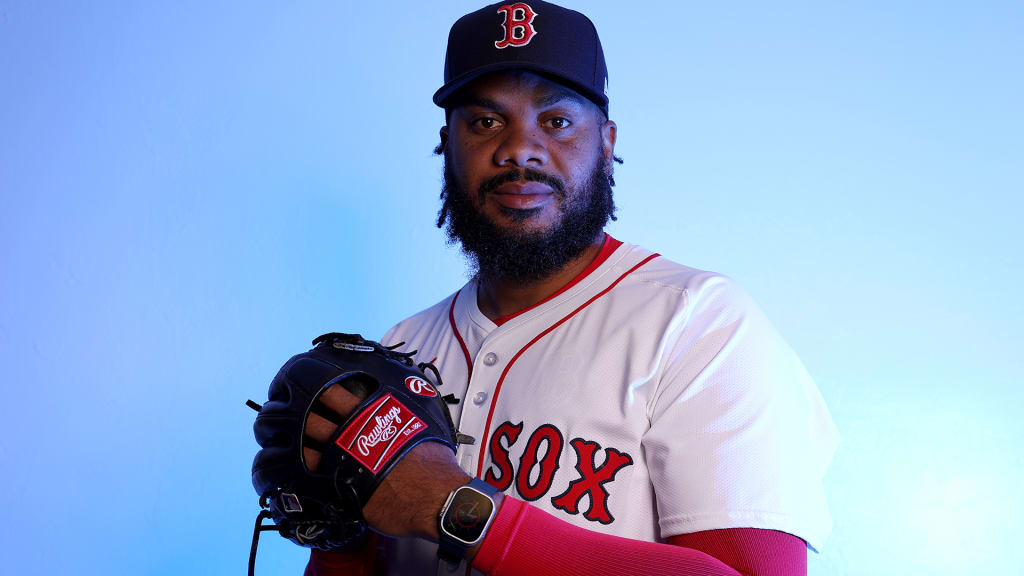
Major League Baseball’s new uniforms have been a hot topic during the early days of Spring Training ahead of the new Nike Vapor jerseys' debut on a full-time basis in 2024.
But the changes have been a long time in the making.
It’s been six years since the league began working on these uniform changes, gathering input from clubs and players as they looked to optimize the jerseys for the best performance possible.
Back in the spring of 2018, MLB began working with Nike and Fanatics on the uniforms, which had been manufactured by Majestic since 2005. The exhaustive process of making wholesale changes to the jerseys wasn’t taken lightly; in fact, the process was as detail-oriented as any in the league’s history.
Tape measures – the preferred vehicle for calculating players’ body types for years – were out. Thanks to Nike, body scan technology was in, presenting a more accurate approach to outfitting Major League players with their uniforms.
Nike’s goal was simple: create jerseys that addressed the needs and desires of the players, namely lighter, more breathable and better-fitting uniform tops.
Nike was tasked with designing the new uniforms, while Fanatics – which had acquired Majestic in 2017 – would produce the jerseys using the same factories that had handled Majestic’s jerseys for several years. Continuity, said MLB Senior Vice President of Global Consumer Products Denis Nolan, was of the utmost importance.

“In acquiring Majestic and its MLB uniform manufacturing facilities in Easton, PA -- which have been making player uniforms for nearly two decades -- Fanatics has consistently produced world-class uniforms, including every Nike-branded MLB on-field jersey and all City Connect gear since 2020,” Nolan said.
More than 300 players underwent body scans during the latter months of the 2018 season, as Nike observed the way players were wearing jerseys.
“It was a very technological approach to outfitting players,” said Stephen Roche, Vice President, MLB Authentic Collection/Global Consumer Products. “Everything was performance-driven.”
Nike tested a number of moisture-wicking fabrics, seeking something lighter in weight that would improve on-field performance. The following Spring Training, four or five clubs tested jerseys with different fabrics and different sleeve types, providing MLB and Nike with feedback along the way. A few clubs even tested out different jerseys late in the regular season after they had been eliminated, giving players an opportunity to test them out during workouts and bullpen sessions.
Using all of the feedback it had collected, Nike created a jersey that was well-received by players, complete with lighter fabric for the numbers, letters and patches – a necessity due to the performance-driven material and the thinner body of the uniform. Gone were the days of thick, embroidered letters, numbers and patches, replaced by sleeker and more efficient options.
The new jerseys were displayed for the clubs, giving them a chance to see how the new uniforms looked up close. During 2022 Spring Training, teams were presented with exact samples of both their home and road uniforms. Later that year, the MLB Players Association also saw the uniforms as part of the review process.
According to a source with knowledge of the meeting, some members of the MLBPA expressed some minor concerns regarding the uniforms, though none involving the issues currently at hand.
Not only was the material different, but even the colors were more uniform. No, the clubs hadn’t changed their colors, but thanks to Nike’s standard color palette and the work of MLB’s design services team, all colors on the uniform – logos, lettering, numbers and patches – would be exact matches. In the past, some shades may have had slight differences as a result of the use of different sub-manufacturers for twill, fabric and patches.
“That was all part of the tightening up of the entire process,” Roche said. “Clubs were able to approve how everything matched Nike’s standard colors. For the first time, we had a uniform where all the colors matched exactly with the hats and the on-field colors. They had always been close, but they weren’t exact. Now they are.”
The plan was to introduce the new uniforms in 2023, but the pandemic caused it to be pushed back a year, as MLB and Nike wanted to make sure no stone was left unturned.
Last spring, all players were measured and fitted by Fanatics’ team, an annual exercise that ensures proper-fitting uniforms for the upcoming season. With the Nike uniforms heading to MLB in 2024, Fanatics also used those 2023 fittings to create a database for all players, giving them a head start on 2024.
The new Nike jerseys – which provide 25% more stretch and dry 28% faster than their predecessors – debuted at the 2023 All-Star Game in Seattle, drawing favorable reviews from players.

“I definitely feel faster in it,” Corbin Carroll said.
“It feels more fit on your body, and how light it is,” Kenley Jansen said. “It’s kind of like the NBA type of jerseys. It’s cool.”
Fanatics used its database from last spring to prepare the jerseys for 2024, but the company will work with players beginning this week to make any necessary tweaks leading up to the regular season.
After testing out the new jersey last week, Jason Heyward of the Dodgers gave his initial review in a video on the team’s social media accounts.
“Somehow, this feels even more authentic than the ones that we’ve been wearing, to be honest,” Heyward said. “The material feels that much nicer; it feels like it’s going to breathe better. And I think the really cool part for the fans is the numbers on the back having that different texture.”
